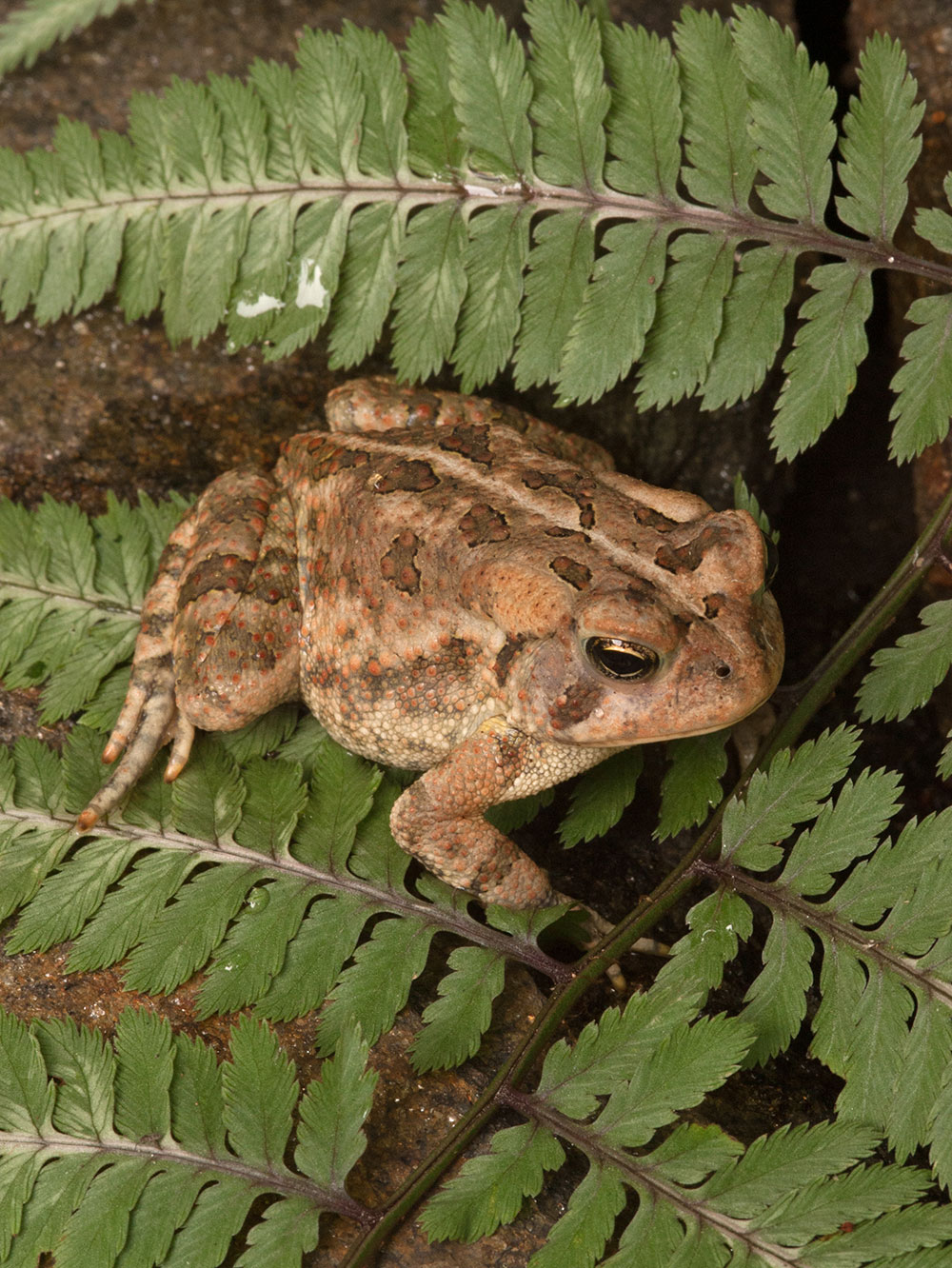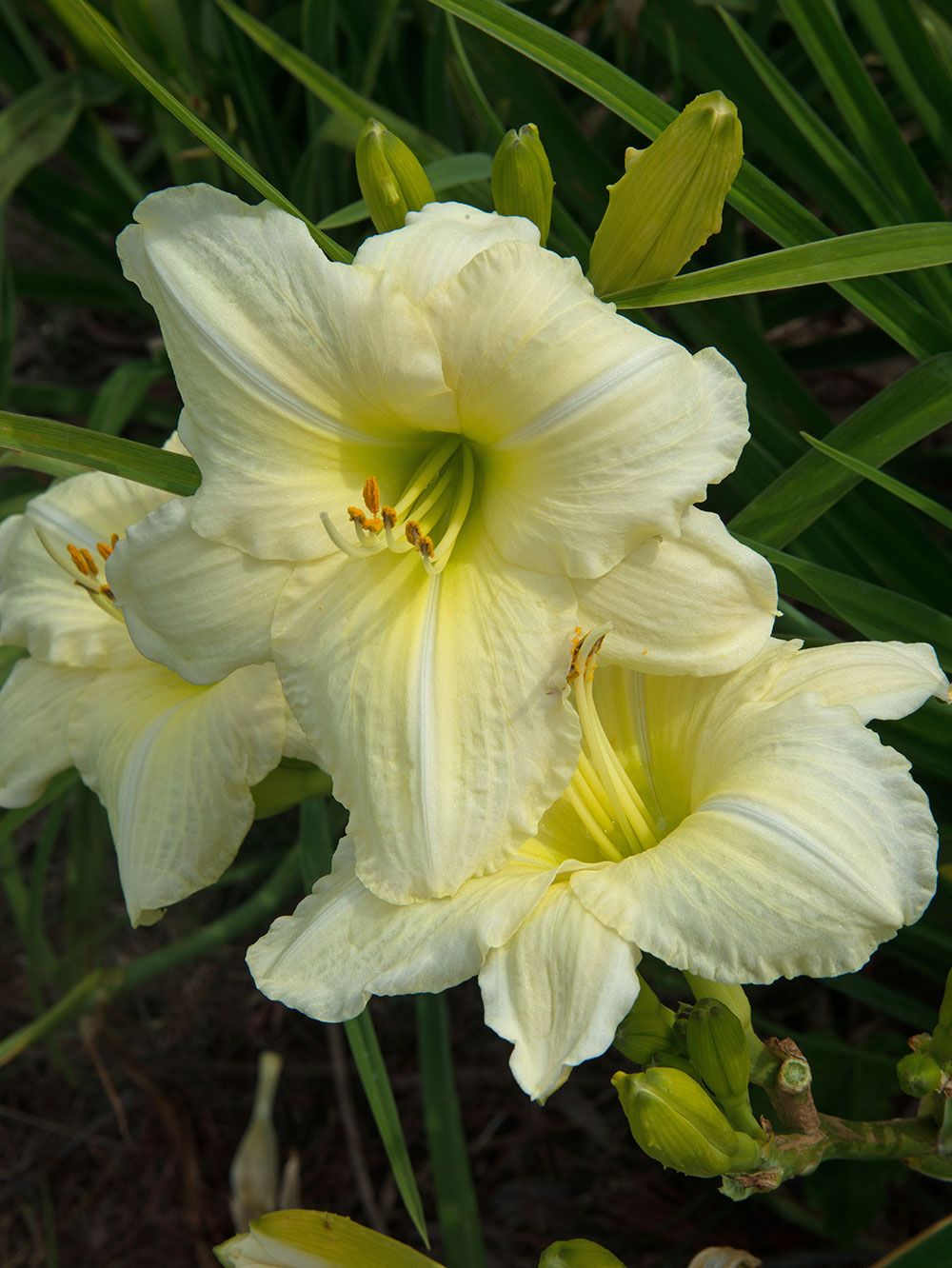Daylilies’ blithe blossoms unfurl in morning’s glory, shine resplendent under the celestial arc of the summer sun, but then, alas, bow and fade into twilight’s quiet embrace. That sentence is not only poor poetic prose, but it’s also inaccurate because of night-blooming daylilies.
Night-blooming daylilies — really? Yep. Oxymorons? You bet.
The American Daylily Society (ADS) classifies any daylily that opens in the afternoon — rather than the norm of early in the day — and stays in flower through the night as “nocturnal,” which is often abbreviated in cultivar descriptions as “NOC.” The blooms of many nocturnal selections begin to wilt early in the morning, but there are some that remain in full flower well into the next day.
But wait, there’s more. The ADS also notes certain daylilies have flowers that open in the morning but stubbornly — in a good way — show off for 16 hours or more, long past their typical bedtime at sunset. These persistent pleasures are labeled as “extended” (“EXT”) daylilies.
Just because they are weird, don’t think “night-lilies” are commercially scarce. The delightfully fragrant ‘Citrina’ with butter-yellow blooms is the easy-to-find poster child for nocturnal daylilies. Last year, I bought two NOC pretties locally: ‘Pardon Me’ (red with greenish yellow throat) and ‘Chevron Spider’ (light peach with burgundy stripes and bright green throat).
Intrigued by extended daylilies? Look no further than the common ‘Stella d’Oro,’ with its perky yellow blossoms. ‘Black Eyed Stella’ (yellow with a reddish throat), a direct flower child descendant of ‘Stella d’Oro,’ is another popular, easy-to-find variety. The classic, fragrant ‘Hyperion’ (soft yellow) is worth considering, too.
I have also snapped up four other extended pretties — ‘Lavender Deal’ (light purple with a bright yellow throat),’ ‘Rocket City’ (orange with rust-orange center), ‘Happy Returns’ (solid yellow), and ‘Joan Senior’ (creamy white with a light yellow throat) — from area nurseries I often haunt.
There are many more night-blooming cultivars available. To start your hunt, just ask the friendly folks at area garden centers what they might have in their inventories. Since many of these daylilies can be, in varying degrees, also fragrant, check for any with this desirable trait, too.
But you might be thinking, “So, just what are night-blooming daylilies good for?” The easy answer is night gardens, those playful, after-dark, lighted plant lairs that never fail to enchant; and moon gardens, where daylily flowers with pale hues can elegantly glimmer in a lunar-lit landscape. Sounds nice, doesn’t it?
To Do in the Garden

Frog or toad?
Have you ever wondered what the difference is between a frog and a toad? Most frogs normally have moist-looking, smooth skin, and they need to live close to water, while toads sport dry, bumpy hides and are more inclined to be land dwellers. Also, frogs jump with their long back legs, but toads have stubbier hind limbs, so they take short hops. However, since the two are efficient hunters of such plant pests as beetles, grubs, cutworms, grasshoppers, snails, and slugs, as well as itch-inducing mosquitoes, both should be considered garden buddies and left alone to patrol garden rows and beds during the growing season.
May
- Wait until at least the middle of this month to mulch your annual ornamental and veggie beds. The soil takes its time to warm up in the spring, so keeping it exposed to strengthening sun rays will please the heat-loving roots of your summer plants sooner rather than later.
- If your lawnmower has become a stubborn starter, first check to make sure the air filter is not super dirty. Then, if your spark plug hasn’t been changed in a couple of years, it’s probably time for a new one. Using old gas leftover from last year’s supply can also lead to hard starts, as will a clogged fuel filter.
June
- Father’s Day is June 15, so, if Pop is an avid gardener, why not surprise him by planting a special, hard-to-find or specimen perennial, shrub, or tree in his honor?
- To spot spray weeds without risking a deadly drift to favored plants, cut the bottom out of an empty 2- or 3-liter plastic soda bottle, place the slit end over offending weeds, spritz liquid herbicide into the narrow top opening, and let the spray settle before moving on to other unwanted plants.
- Garden Adventurer: Night-lilies
- Erica Chats: Fashion: It’s More Than Skin Deep!
- Out & About in Wake County: May/June 2025
- Celebrated Spirits: Yellow Umbrella
- Celebrated Spirits: Shark’s Tooth
- Shaped by Place
- 25 Years of Koka Booth Amphitheatre
- Pay It Forward: Diaper Train
- Small Business Spotlight: Young Writers’ Institute
- Art for All
- Indelible Ink
- Roadtrip to Raleigh
- A Song for Every Season








